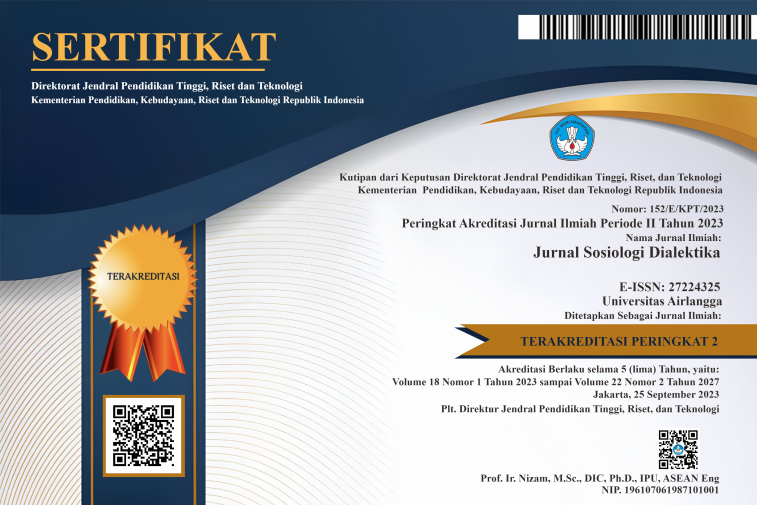A review on the prevailing gaps in women's sexual and reproductive health rights in Tanzania's National Health Policy 2017
Downloads
Women's sexual and reproductive health rights (SRHR) are linked to numerous human rights; health, education, freedom from torture, protection from all forms of discrimination, and right of privacy. SRHR refers to a set of rights that every human being is entitled to, regardless of culture, race, religion, ethnicity, or disability. Women's sexual and reproductive health rights have been taken for granted, especially in Tanzania's health policies. However, Tanzania has several National Policies and Laws that affect women and men differently and in certain areas, they even contradict other existing laws. The prolonged poor SRHR shows the urgency of the reformation of the policies and laws. The analysis was carried out qualitatively through a reflection focused on the policy and other legal materials concerned. The study revealed that the policy does not cater enough for women's SRHR. This study concludes that the policies are outdated and have a lot of loopholes. This has led the sexual and reproductive health system in Tanzania astray. The study concludes that the TNHP 2017 has to be reviewed and revised in order to meet the women's SRHR and also to align it with some of the international policies and targets concerning sexual and reproductive health.
Alemu T & Fantahun M (2011) Sexual and reproductive health status and related problems of young people with disabilities in selected associations of people with disability, Addis Ababa, Ethiopia. Ethiopian Medical Journal 49 (2):97-108.
Bosmans M, Nasser D, Khammash U, Claeys P & Temmerman M (2008) Palestinian women's sexual and reproductive health rights in a longstanding humanitarian crisis. Reprod Health Matters 16 (31):103-111.
Boydell V, Schaaf M, George A, Brinkerhoff DW, Van Belle S & Khosla R (2019) Building a transformative agenda for accountability in SRHR: Lessons learned from SRHR and accountability literatures. Sexual and Reproductive Health Matters 27 (2):64-75.
Chandra-Mouli V, Svanemyr J, Amin A, Fogstad H, Say L, Girard F & Temmerman M (2015) Twenty years after international conference on population and development: Where are we with adolescent sexual and reproductive health and rights? Journal of Adolescent Health 56 (1):1-6.
Darroch JE, Frost JJ & Singh S (2001) Teenage Sexual and Reproductive Behavior in Developed Countries. New York: The Allan Guttmacher Institute.
Devries KM, Kishor S, Johnson H, Stöckl H, Bacchus L, Garcia-Moreno C & Watts C (2010). Intimate partner violence during pregnancy: Prevalence data from 19 countries. Reproductive Health Matters 18 (36):1-13.
García-Moreno C, Jansen HA, Ellsberg M, Heise L & Watts C (2005) WHO Multi-Country Study on Women's Health and Domestic Violence Against Women: Initial Results on Prevalence, Health Outcomes and Women's Responses. Geneva: World Health Organization.
Global Health Workforce Alliance (2013) MLHWs Country Case Studies: Annex 5. Tanzania. MLHWs Country Case Studies, 1–19. [Accessed 17 January 2021]. who.int/workforcealliance/knowledge/resources/MLHWCountryCaseStudies_annex5_Tanzania.pdf
Government of Sweden (2016) Strategy for Sexual and Reproductive Health and Rights (SRHR) in Sub-Saharan Africa. Stockholm: Government of Sweden.
HEARD (2015) Country factsheet: Tanzania sexual and reproductive health and rights. [Accessed 10 January 2021]. http://www.heard.org.za/wp-content/uploads/2015/11/Zimbabwe-country-fact-sheet.pdf.
Kamazima SR (2009) Human trafficking baseline assessment in Tanzania: Findings from selected regions. A Report published for International Organization for Migration 7-8.
Mesiäislehto V, Katsui H & Sambaiga R (2021) Disparities in accessing sexual and reproductive health services at the intersection of disability and female adolescence in Tanzania. International Journal of Environmental Research and Public Health 18 (4):1-14.
MOHCDGEC (2017) The united republic of Tanzania, Ministry of health, community development, gender, elderly and children. The National Health Policy 2017, Sixth Draft Version, for External Consultations with Ministries, Departments, and Agencies, 24th October 2017.
National Bureau of Statistics Tanzania & ICF Macro (2011) Tanzania Demographic and Health Survey 2010. Dar es Salaam: NBS & ICF Macro Press.
Ngilangwa DP, Rajesh S, Kawala M, Mbeba R, Sambili B, Mkuwa S, Noronha R, Meremo AJ & Nyagero J (2016) Accessibility to sexual and reproductive health and rights education among marginalized youth in selected districts of Tanzania. The Pan African Medical Journal 25 (2):1-7.
Nyblade L, Stockton M, Nyato D & Wamoyi J (2017) Perceived, anticipated and experienced stigma: Exploring manifestations and implications for young people's sexual and reproductive health and access to care in North-Western Tanzania. Culture, Health and Sexuality 19 (10):1092-1107.
Schaaf M, Boydell V, Van Belle S, Brinkerhoff DW & George A (2020) Accountability for SRHR in the context of the COVID-19 pandemic. Sexual and Reproductive Health Matters 28 (1).
Shaw D (2009) Access to sexual and reproductive health for young people: Bridging the disconnect between rights and reality. International Journal of Gynecology & Obstetrics 106 (2):132-136.
Sundby J (2006) Young people's sexual and reproductive health rights. Best Practice & Research Clinical Obstetrics & Gynaecology 20 (3):355-368.
Tume ya Kudhibiti Ukimwi Tanzania (2006) Mpango uendeshaji wa kijinsia kwa ajili ya mwitikio wa VVU. Dar es Salaam: Jamhuri ya Muungano wa Tanzania.
Tajfel H & Turner JC (1986) The Social Identity Theory of Intergroup Behavior. In: Worchel S & Austin WG (ed). Psychology of Intergroup Relations. Chicago: Nelson"Hall. 7-24.
The Constitution of the United Republic of Tanzania (1998) The Constitution of the United Republic of Tanzania: Amendments.
Tull K (2019) Evidence on Family Planning Use in Young People of Tanzania. Brighton: Institute of Development Studies.
Tull K (2020) Maternal and Sexual Reproductive Health Situation in Tanzania. Brighton: Institute of Development Studies.
Turner JC (1978) Social Comparison, Similarity and Ingroup Favouritism. In: TH (ed). Differentiation between Social Groups: Studies in The Social Psychology Of Intergroup Relations. London: Academic Press. 235-250.
Turshen M & Turshen M (2020) Sexual and reproductive health and rights. Women's Health Movements, 191-229.
UN (2018) Reproductive Health Policies 2017. Economic & Social Affairs, Data Booklet. Sweden: United Nations.
UNESCO (2013) Addressing the links between gender-based violence and HIV in the Great Lakes region: Background Information on GBV and HIV. Regional Workshop-15-16th July 2013 Dar es-Salaam, Tanzania,1-21. [Accessed 20 December 2020]. unesco.org/new/fileadmin/MULTIMEDIA/HQ/BSP/GENDER/PDF/HIVGBVbackgroundreport.pdf.
United Nations General Assembly (1995) Principle 1 and Principle 4, respectively, of the ICPD Programme of Action, uphold human rights and gender equality and equity and women's empowerment. In Report of the International Conference on Population and Development. A/94/10/18. Programme of Action (Issue September 1994). [Accessed 21 December 2020]. https://www.un.org/en/development/desa/population/events/pdf/expert/27/SupportingDocuments/A_CONF.171_13_Rev.1.pdf.
Yngheden E & Sandqvist J (2019) Educating students about sex is like giving them a gift, without being allowed to open it: A study about students' attitudes towards Sexual and reproductive health and rights education in Moshi, Tanzania. Dissertation, Malmö University, Swedia.
1. Copyright of this journal is possession of Editorial Board and Journal Manager, by the knowledge of author, whilst the moral right of the publication belongs to the author.
2. Legal formal aspect of journal publication accessibility refers to Creative Commons Attribution-NonCommercial-ShareAlike (CC BY-NC-SA), implies that publication can be used for non-commercial purposes in its original form (cannot be modified).
3. Every publications (printed/electronic) are open access for educational purposes, research, and library. Other that the aims mentioned above, editorial board is not responsible for copyright violation.















